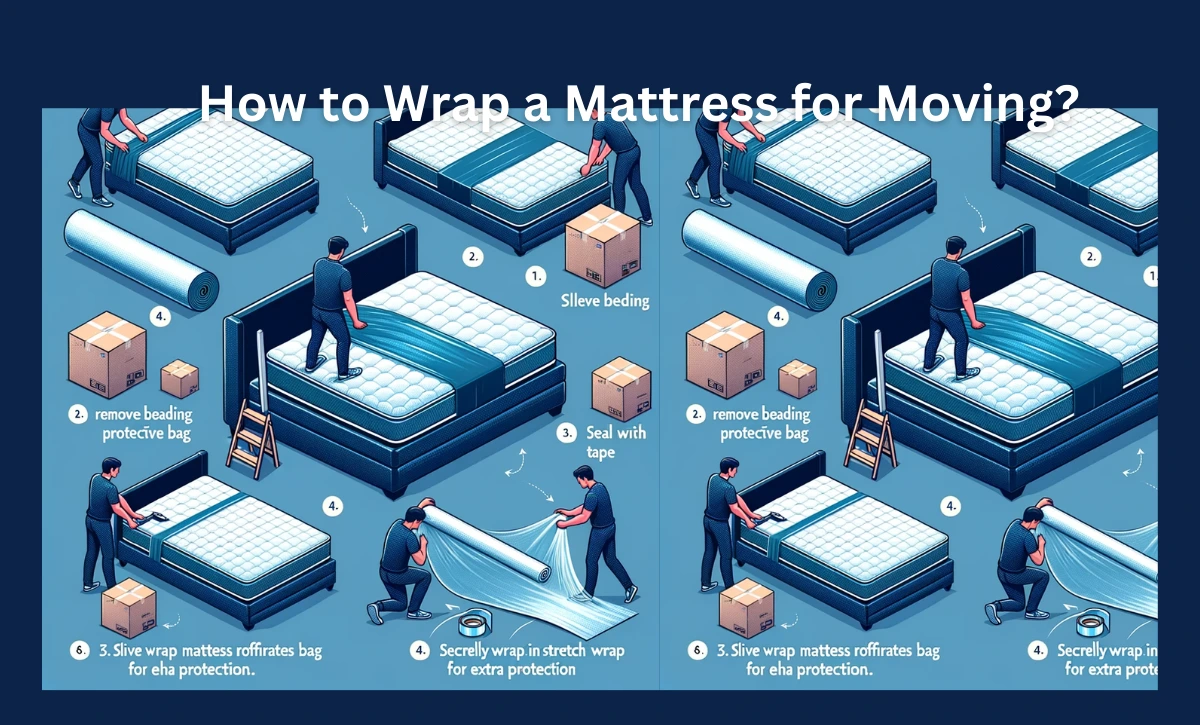Moving can be a challenging experience, but transporting your mattress doesn’t have to add to the stress. With the right techniques and materials, wrapping your mattress for a move can be a simple and satisfying task. This comprehensive guide, crafted by experts in the field, will walk you through the process step by step, ensuring your mattress arrives at your new home in perfect condition.
Secure Mattress Packing for Transportation
Choosing the Right Mattress Bag
The first step in protecting your mattress is selecting an appropriate mattress bag. These bags come in various sizes to fit all mattress types. A well-fitting mattress bag acts as a protective shell, shielding your mattress from dirt, moisture, and pests. Slide the mattress into the bag gently, ensuring it’s fully enclosed, and seal the open end with durable packing tape.
Additional Protection Layers
For extra safety, especially during long-distance moves, wrap the bagged mattress in bubble wrap or moving blankets. These layers provide cushioning and prevent any damage from bumps or scrapes during transit. Secure everything in place with packing tape or stretch wrap. This multi-layer approach is crucial for maintaining the mattress’s integrity throughout the move.
Protecting Your Mattress During a Move
Art of Lifting and Loading
Handling your mattress correctly is vital to prevent any internal damage. Always keep the mattress upright while lifting and loading. This position helps maintain the mattress’s structure and prevents any bending or warping that could compromise its comfort.
Ensuring Safe Transit
Once in the moving truck, position your mattress in a way that it won’t slide or shift. If possible, place it against a flat surface and use straps or ropes to secure it. This ensures your mattress remains stationary and arrives in the same condition it left.
Avoiding Common Wrapping Mistakes
One of the key aspects of wrapping a mattress effectively is knowing what to avoid. Do not use thin or flimsy materials that can easily tear. Avoid over-tightening the wrap, as it can deform the mattress. Ensure there’s no exposure to sharp objects during transit, which can puncture the protective layers.
Considerations for Different Mattress Types
Different types of mattresses require specific care. For instance, memory foam mattresses need to be kept flat to prevent the foam from becoming misshapen. Innerspring mattresses, on the other hand, can be more resilient but still require careful handling to avoid spring damage.
Tips for Moving Day
Stairs and Doorways
When moving the mattress through tight spaces, such as stairs and doorways, communication and coordination are crucial. Always plan your route in advance and ensure you have a helper to navigate tricky turns and narrow passages.
Storage and Waiting Periods
If there’s a waiting period before setting up your mattress in the new location, store it in a dry, cool place. Avoid placing heavy objects on top of it to prevent any indentation or internal damage.
Wrapping for Long-Distance Moves
Transportation Tips
For long-distance moves, extra care should be taken. Check the wrapping periodically throughout the journey to ensure it remains secure. If the mattress is traveling in a shared moving truck, make sure it’s positioned in a way that avoids pressure or damage from other items.
Post-Move Unwrapping
Once at the destination, carefully remove all layers of protection and allow the mattress to ‘breathe’ for a few hours before use. This is particularly important for foam mattresses, which may need time to regain their original shape and firmness.
Sealing Tips
Sealing Techniques
Use high-quality packing tape for sealing the mattress bag. For extra security, apply tape in a criss-cross pattern, which provides better hold and reduces the risk of the bag opening during the move.
Utilizing Corner Protectors
For added protection, especially for the corners of the mattress, use corner protectors. These simple additions can prevent wear and tear during handling and transportation, keeping the edges of your mattress sharp and intact.
FAQs
What materials do I need?
Besides the mattress bag, have packing tape, bubble wrap or moving blankets, and stretch wrap on hand.
Can I move without a mattress bag?
It’s possible, but not recommended. A mattress bag provides essential protection against dirt and damage.
How to keep a mattress clean during the move?
Ensure it’s fully enclosed in the mattress bag and add extra layers like bubble wrap for added protection.
Best way to protect a mattress on a long journey?
Use a multi-layer protection strategy – a mattress bag, bubble wrap, and secure with stretch wrap.
Do I need professional movers for my mattress?
While not necessary, professional movers can provide expertise and equipment for a smoother move.
Wrap Up
Wrapping a mattress for moving doesn’t have to be a daunting task. By following these expert tips and using the right materials, you can ensure your mattress stays protected and arrives in top condition. Remember, careful preparation is key to a successful move, and your mattress deserves the best care. Happy moving!

Shannon Reyes is a seasoned writer with a knack for crafting engaging blogs on a variety of service industries, including plumbing, cleansing, moving, pest control, and roofing. With a keen eye for detail and a passion for helping readers navigate complex topics, Shannon brings her expertise to life through informative and accessible content.












1 thought on “How to Wrap a Mattress for Moving?”
Comments are closed.